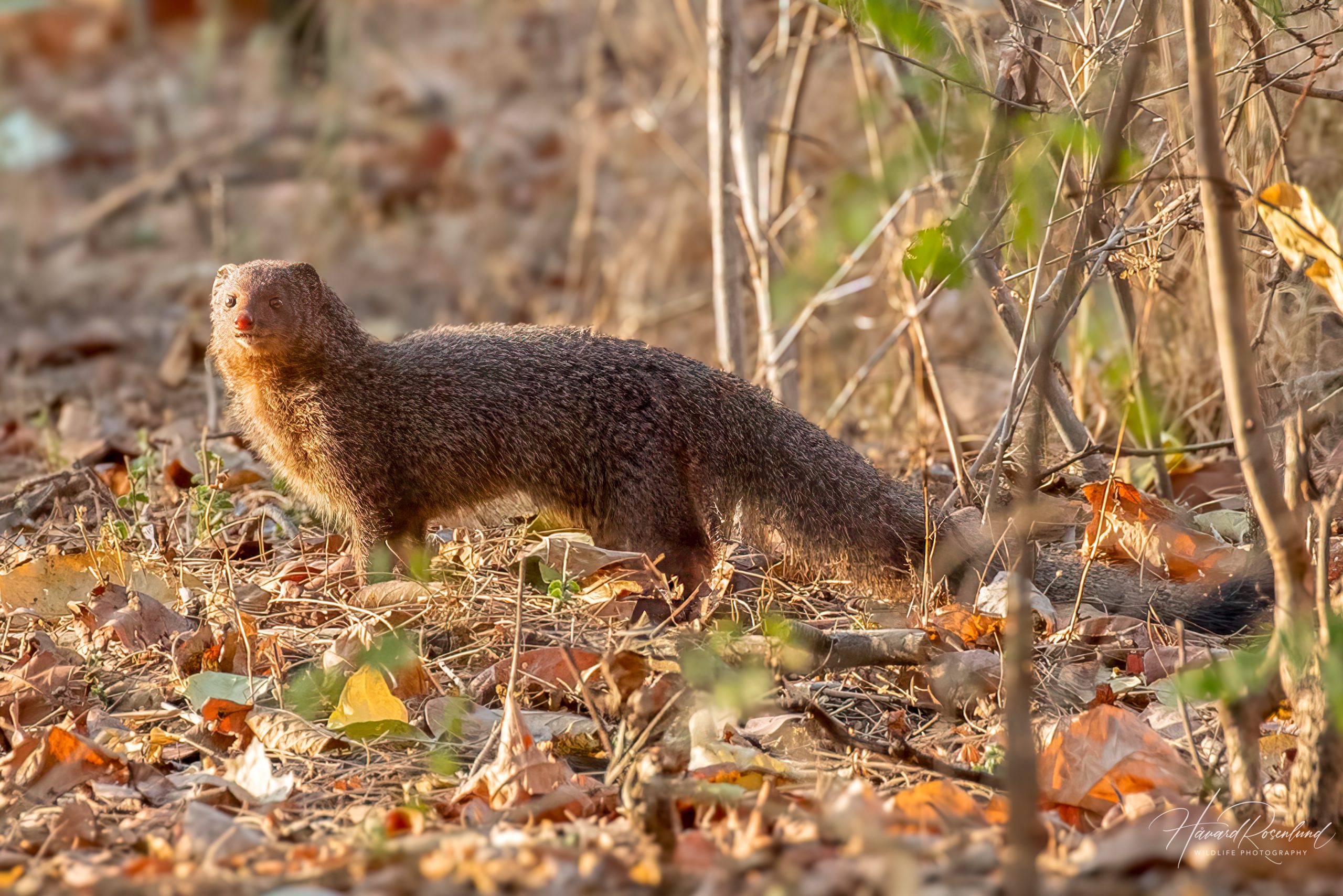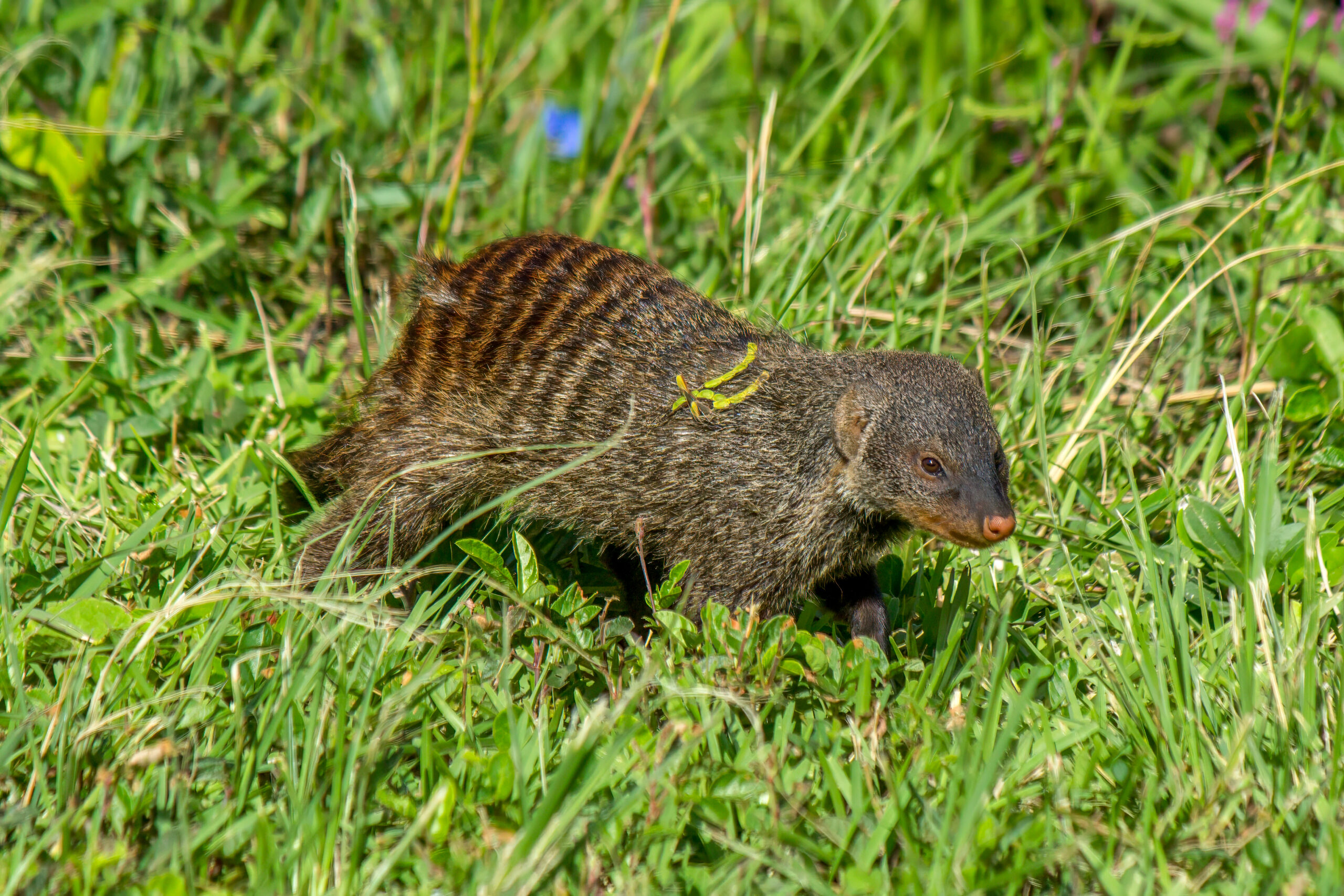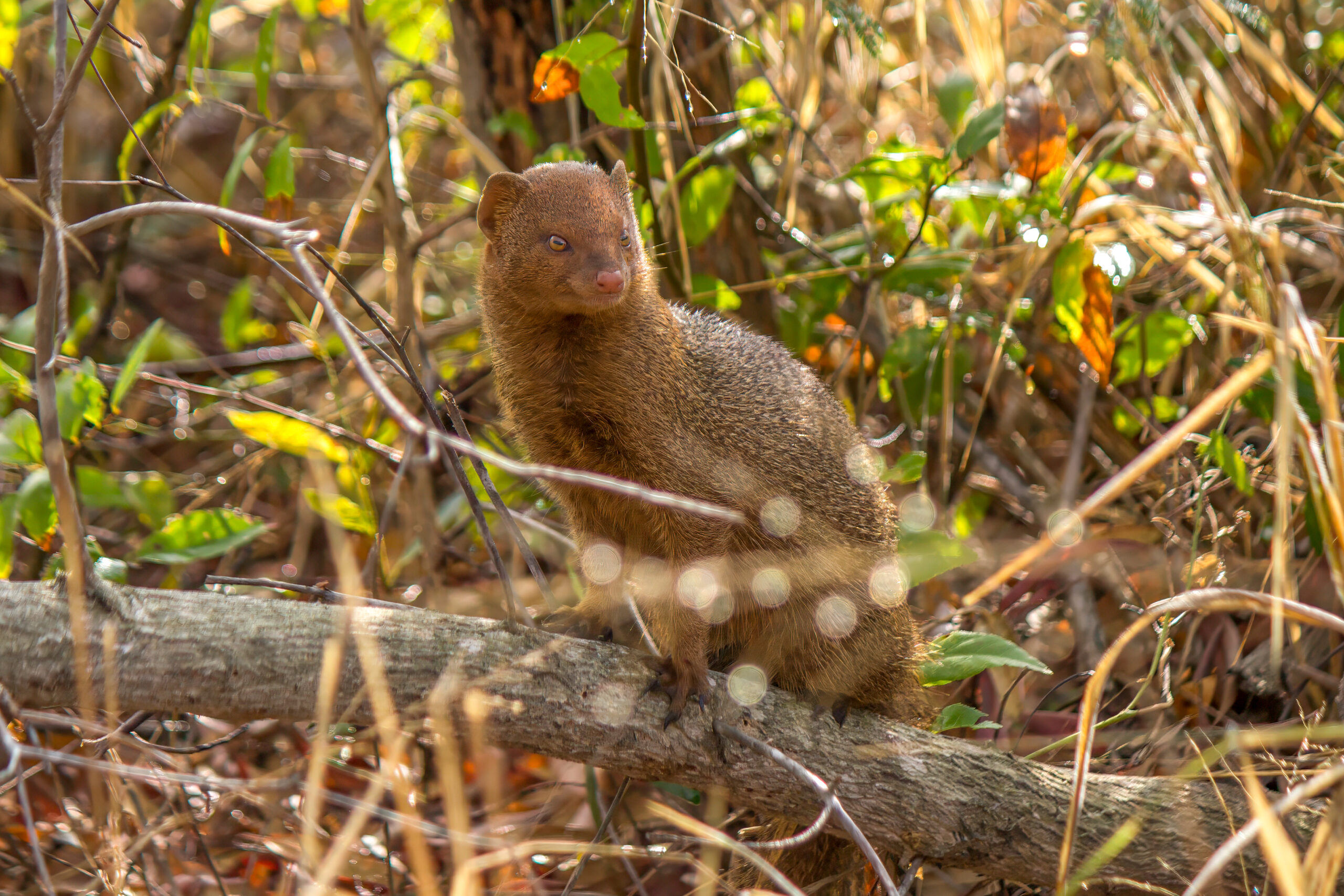Description
The ruddy mongoose (Urva smithii) is a small and slender carnivore native to South Asia. It is found primarily in the forests, grasslands, and shrublands of India and Sri Lanka. This species stands out with its reddish-brown coat, which distinguishes it from other mongoose species in the region that typically have more greyish or brown fur. Adult ruddy mongooses measure between 39 and 47 cm (15-18 inches) in body length, with a bushy tail adding another 30–36 cm (12–14 inches). They have a pointed snout and sharp claws suited for digging. The ruddy mongoose can be confused with the Indian grey mongoose (Urva edwardsii) but can be distinguished by its more reddish hue.
Diet & habitat
The ruddy mongoose inhabits diverse environments ranging from dense forests to open grasslands and human-altered landscapes. It is highly adaptable and can be found from sea level up to mountainous regions. Its diet is omnivorous and highly opportunistic, consisting mainly of small mammals, birds, reptiles, amphibians, insects, and fruits. It also has a high resistance to snake venom, allowing it to prey on venomous snakes like cobras.
Ruddy mongooses are skilled hunters, using their keen sense of smell and hearing to locate prey. They are known to eat eggs and can often be seen cracking open bird eggs by throwing them against hard surfaces. This species forages both during the day and night, depending on the availability of food and environmental conditions.
Behavior
Ruddy mongooses are generally solitary animals, although they may be seen in pairs or small family groups. They are territorial and use scent marking to establish their territory, employing glands located near their anus to deposit scent on objects within their range. These animals are agile and quick, capable of impressive bursts of speed when pursuing prey or evading predators. They communicate with a variety of vocalizations including growls, hisses, and squeals, especially during aggressive encounters or when threatened. They are also known to be excellent climbers and swimmers, adding to their versatility as predators and scavengers.
Reproduction
The breeding season of the ruddy mongoose varies with geographic location, but it typically peaks during the wet season when food is abundant. Females usually give birth to one to three young after a gestation period of approximately 60–70 days. The young are born blind and helpless, relying heavily on their mother for warmth and nourishment in the early weeks of life. The mother provides extensive care, nursing the pups and teaching them to hunt as they grow. Weaning occurs around 6–8 weeks of age, and juveniles may remain with the mother for several months before dispersing. The average life expectancy of the ruddy mongoose in the wild is around 7–10 years.
Status
The ruddy mongoose is classified as least concern by the IUCN, reflecting its widespread and stable population. However, it faces threats from habitat destruction, hunting, and poisoning, particularly in areas where it is viewed as a pest. Additionally, road mortality is a significant threat due to increasing vehicular traffic in its habitats. Habitat preservation and mitigating human-wildlife conflicts will help ensure the species’ long-term survival.






